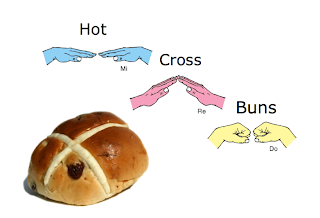To start off the school year I began with Beethoven. Not knowing these students I wanted to start off with a composer I figured they knew. I was correct and they love him. So today I decided to do the Beethoven section from the Playing with the Classics Vol. I by Peggy D. Bennett. I also created a Smart Notebook lesson to go along with it that you can download here.***You will have to attach your own sound files to the lesson but those can be found with the book.
 Since the students were already familiar with Beethoven, talking about his music was an easy conversation. I told the students that some composers want us to think about something in particular when we listen to their music but in the piece we were going to listen to no one was really sure what Beethoven was trying to say. We listened and then I asked them what they thought. First graders were not very forthcoming with suggestions and so I asked them if they thought Beethoven was saying "Now go to sleep....." or perhaps "Here comes a storm....". They liked the 2nd suggestion and immediately I had students saying "Here comes a storm...." or their own variation of that sentence. I also noticed they quickly had their hands on the floor tapping out the rhythm pattern. No encouragement needed there! I jumped in though and showed them a different way to use their hands as instructed in the book, tapping and then bringing my hands high like a conductor. They picked it up quickly again. I followed the script in the book, it worked well. The students responded nicely. We listened, did the hand pattern, and then followed the map.
Since the students were already familiar with Beethoven, talking about his music was an easy conversation. I told the students that some composers want us to think about something in particular when we listen to their music but in the piece we were going to listen to no one was really sure what Beethoven was trying to say. We listened and then I asked them what they thought. First graders were not very forthcoming with suggestions and so I asked them if they thought Beethoven was saying "Now go to sleep....." or perhaps "Here comes a storm....". They liked the 2nd suggestion and immediately I had students saying "Here comes a storm...." or their own variation of that sentence. I also noticed they quickly had their hands on the floor tapping out the rhythm pattern. No encouragement needed there! I jumped in though and showed them a different way to use their hands as instructed in the book, tapping and then bringing my hands high like a conductor. They picked it up quickly again. I followed the script in the book, it worked well. The students responded nicely. We listened, did the hand pattern, and then followed the map.This was a very easy and fun lesson to present. Doesn't take too much time. It was a nice lesson to use after all of our discussion about Beethoven. Gold star for this lesson!
***For some reason, when I save and then open this file in IE, it does not save as a Notebook file. In Mozilla Firefox, no problem. No issues with Chrome either. Go figure.


















